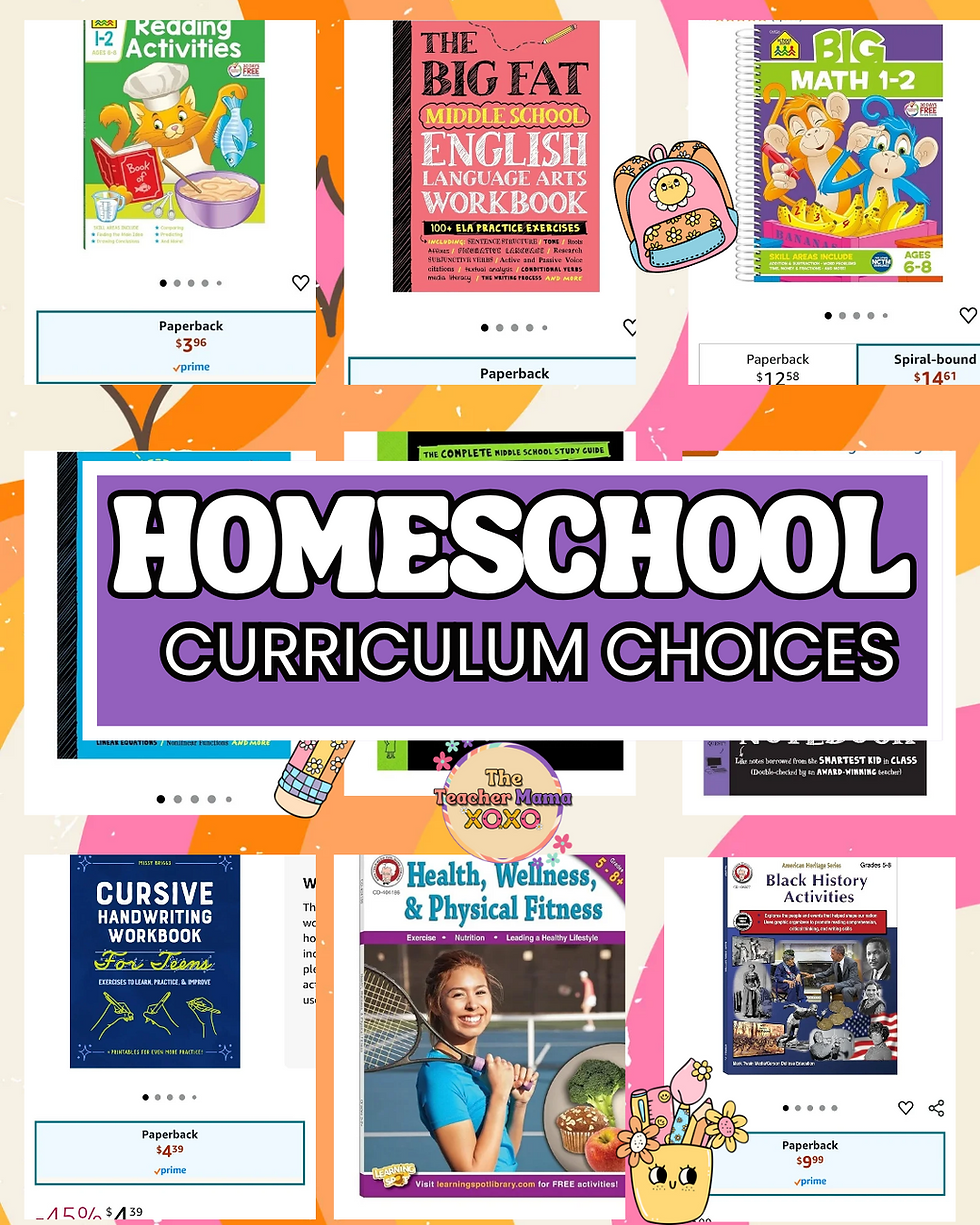How I Create a Rich, Well-Rounded Homeschool Experience for My Kids Using Core Knowledge and Beyond
- TheTeacherMama.XO

- Feb 5
- 4 min read
Updated: Feb 16

Hi there, friends! It’s TheTeacherMama.XO here, and I’m so excited to share a little peek into our homeschool journey with you. As a mama of three (with kids in different stages of learning), I’ve worked hard to create a curriculum that’s engaging, effective, and—most importantly—fun! Today, I want to dive into the resources and methods I use to make learning come alive for my kiddos.
The Foundation: Core Knowledge Curriculum
At the heart of our homeschool is the free curriculum by Core Knowledge. If you haven’t checked it out yet, you’re missing out! This curriculum is a treasure trove of well-structured, content-rich materials that cover language arts, history, geography, science, and the arts. It’s designed to build knowledge sequentially, which means my kids are constantly building on what they’ve already learned.
What I love most about Core Knowledge is that it’s rigorous but flexible. I can adapt it to fit my kids’ individual needs and interests. For example, my 6th grader might dive deeper into ancient civilizations, while my younger ones explore folktales and fables. It’s a fantastic starting point that ensures we’re covering all the essentials.
Supplementing with Tech: Learning Apps

While Core Knowledge provides the backbone of our learning, I love to supplement with educational apps to keep things fresh and interactive. Here are some of our favorites:
Khan Academy: Perfect for my younger ones, this app offers engaging activities in math, reading, and social-emotional learning. Plus, it’s free!
Duolingo ABC: A fun way to practice early literacy skills. My kids love the colorful characters and games.
ABCmouse: This one is a hit with my preschooler and early elementary kiddos. It covers everything from phonics to science in a playful, interactive way.
Adventure Academy: My older kids enjoy this app because it feels like a video game but teaches critical thinking, math, and language arts.
Prodigy Math and Prodigy English: These games are a lifesaver for making math and grammar practice exciting. My kids don’t even realize they’re learning!
These apps are great for independent learning, and they’re perfect for days when we’re on the go or need a little screen time to mix things up.
Hands-On Learning: Manipulatives and Activities
I’m a firm believer in the power of hands-on learning. Whether it’s using counting blocks for math, letter tiles for spelling, or science kits for experiments, manipulatives make abstract concepts tangible. My kids love building, creating, and exploring, so I try to incorporate as many tactile experiences as possible.
For example, when we studied ancient Egypt, we built a model of the Nile River and watched it “flood” just like the real thing. When we learned about fractions, we used pizza slices (real ones—yum!) to understand the concept. These activities not only reinforce what we’re learning but also create lasting memories.
Learning Beyond the Classroom: Field Trips and Extracurriculars
One of the best parts of homeschooling is the freedom to take our learning outside the house. We’re big on field trips and exploring the world around us. Here are some of our recent adventures:
Maplewood State Park: We hiked, observed wildlife, and learned about ecosystems. It was a perfect way to connect science and nature.
The Zoo: Animal habitats, conservation, and biology come to life when you’re face-to-face with a giraffe or a lion.
Museums: Whether it’s art, history, or science, museums are a goldmine of learning opportunities.
We also make time for extracurricular activities to round out their education. My kids take figure skating classes, which teach discipline, perseverance, and physical fitness. My 6th grader is in a volleyball club, where she’s learning teamwork and leadership. And of course, we frequent our local community park for exercise, free play, and socialization with other kids.
Balancing Structure and Flexibility
One of the things I’ve learned as TheTeacherMama.XO is that balance is key. While I love having a structured curriculum like Core Knowledge, I also leave room for flexibility. Some days, we might spend hours at the park or on a field trip. Other days, we might focus on a deep dive into a topic one of the kids is passionate about.
The beauty of homeschooling is that it allows us to tailor our days to what works best for our family. Whether we’re curled up with a good book, exploring a new app, or hiking through a state park, every moment is an opportunity to learn and grow together.
Final Thoughts
Homeschooling is a journey, and it’s one I’m so grateful to be on with my kids. By combining the Core Knowledge curriculum with supplemental apps, hands-on activities, and real-world experiences, I’ve been able to create a learning environment that’s both enriching and enjoyable.
If you’re considering homeschooling or just looking for new ideas, I hope this post inspires you to explore what works best for your family. Remember, there’s no one-size-fits-all approach—just do what feels right for you and your kiddos.
Let me know in the comments what resources and activities you love for your homeschool journey. And don’t forget to follow along on my social media pages for more tips, tricks, and updates from our little classroom at home!
With love,
TheTeacherMama.XO 💕




Comments